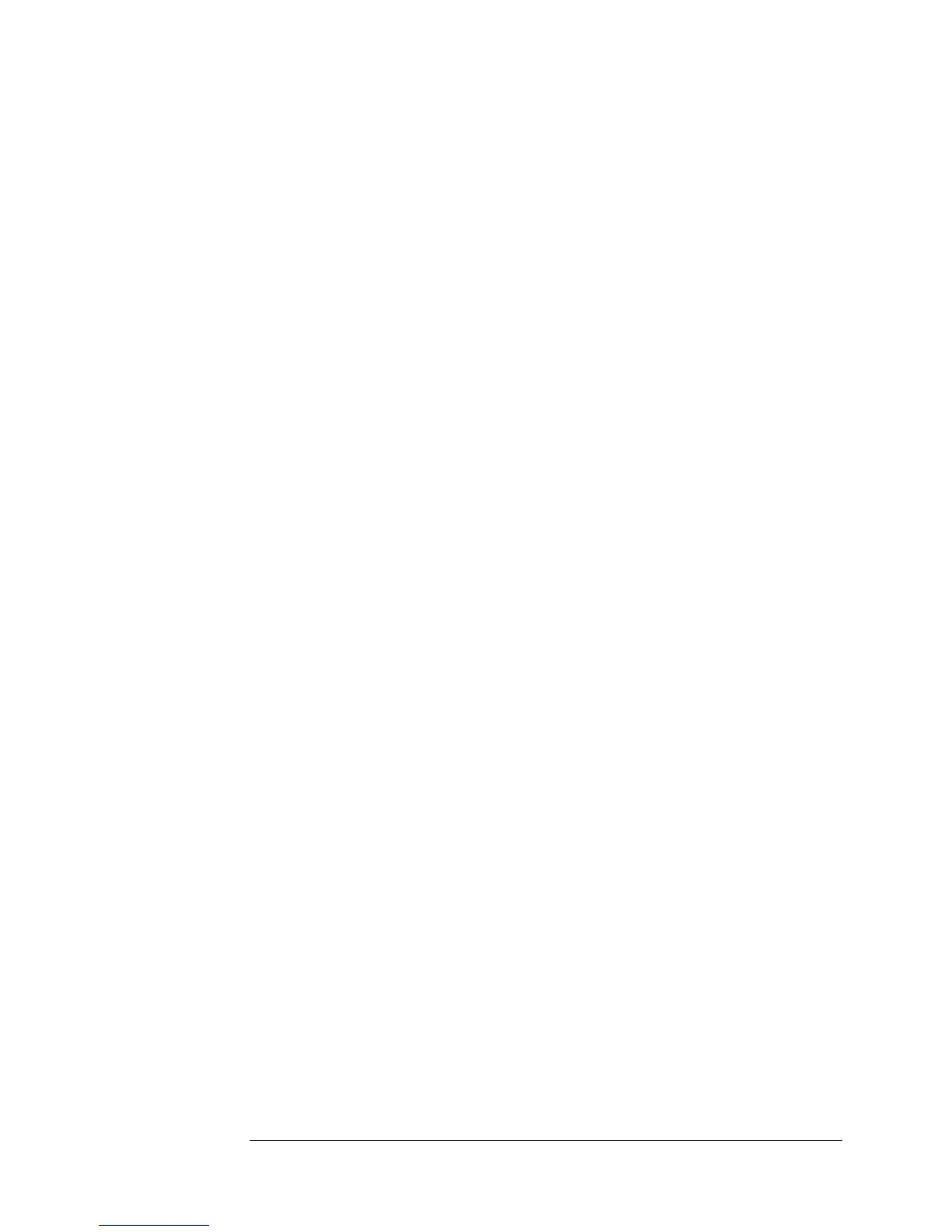3. Theory of Operation
Functional Block Descriptions
133
Instrument Control Block
The instrument control block consists of the A3 microprocessor, A7 Interface,
A13 front panel assemblies, I-bus, and operating firmware. It has five inputs:
a. front panel keypad entry,
b. RS-232C,
c. VFC,
d. power status,
e. I-bus,
and seven outputs:
a. front panel LEDs/LCD displays,
b. RS-232C,
c. VFCclk,
d. Strobe (to A4, A6, A7),
e. SEL A/SEL B (to A10),
f. Status Output, and
g. I-bus.
Hardware
A3 receives data inputs that, via processing create outputs to control all
internal housekeeping, servo-loop, diagnostic, and system status functions.
All instrument blocks are controlled or monitored by this block. The outputs
can also provide information about the instrument's current operational
status.
A13 keypads and LEDs/LCD displays provide the hardware user interface
to facilitate test-bench and rack-mount front-panel user-interface operation
while the rear-panel RS-232C port and status output provide the interface
hardware for remote operation with the on-board SCPI command set.
The VFC and VFC clock lines go to A6, providing a path for specific
frequency count data that arrives from the analog-signal chain block. The
Strobe output is routed to A4/A6/A7 and is used synchronize data transfer
between A3 and the reference oscillator/RF chain, analog-signal chain, and
cesium-beam tube blocks respectively.
A7 receives command input from the I-bus to generate four functional
outputs:
a. amplitude modulation signal (DAC 2) sent to A15,
b. C-field control signal (DAC 1) routed to A17 CBT,
c. two isolated digital outputs (SEL A/SEL B) sent to A10, and
d. one isolated digital output sent to the rear panel Status Output BNC
connector.
Another area on A7 (A/D and Analog MUX) samples the tuning voltages of
A5, A9, A18, the +5V, +12V, -12V dc supply voltages, and several CBT
supply voltages, sending this information to A3 via the I-bus.
